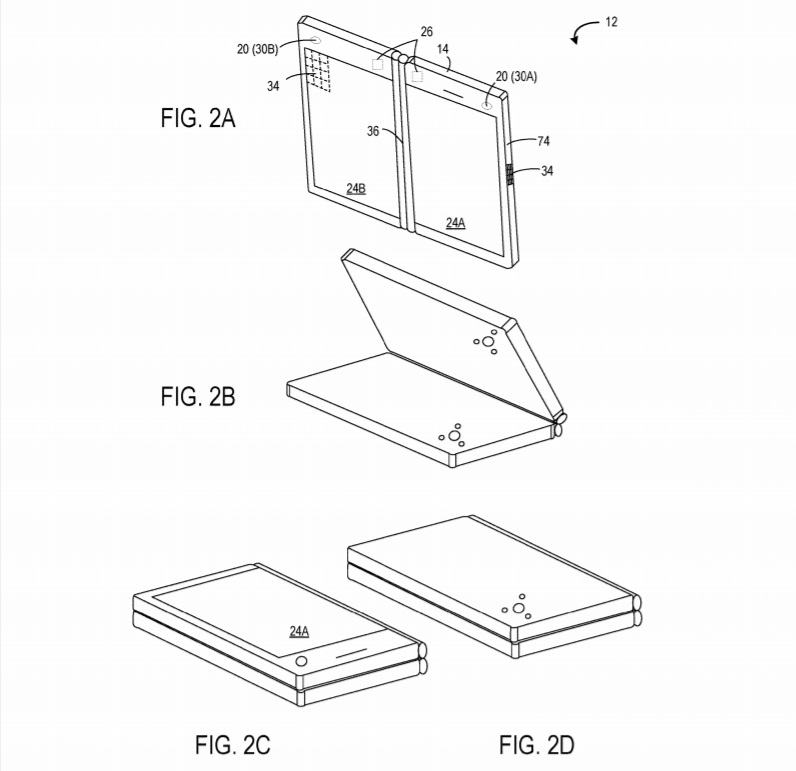Microsoft files patent for a dual-screen device with focus on video calling
3 min. read
Updated on
Read our disclosure page to find out how can you help MSPoweruser sustain the editorial team Read more

Microsoft has filed a patent for a dual-screen device made with video calling in mind. The new patent lines up with the rumours of Microsoft developing a foldable device codenamed “Andromeda”.
The patent titled “Three-way video calling on hinged multi-screen device” was filed on June 30, 2017, and the U.S. Patent and Trademark Office published the patent on July 3, 2018. The patent talks about a device which will have a dual-screen interface and will be useful for video calling.
Users interact with multi-screen mobile devices throughout a variety of positions, including holding the device vertically, holding the device with a primary screen facing toward the user, holding the screen with a second screen facing toward the user, and other positions and orientations. Conventionally, it may be difficult for users in the same physical space to be part of a video call when they are not in proximity to one another, especially when there are three or more participants. They may lose sight of each other or a remote user, and it may be difficult to tell if the users are in frame of the cameras recording them.
The patent discusses an interesting idea which might be applied to Andromeda and possibly to other devices as well. However, the design does possess some issues and Microsoft has shared the solution to it as well.
To address the above issues, a mobile computing device is provided. The mobile computing device may comprise a housing having a first part and a second part, the first part including a first display and the second part including a second display. A first camera may be mounted in the first part of the housing, and a second camera mounted in the second part of the housing. A processor may be mounted in the housing and configured to operate in a camera mode in which the processor is configured to process image data captured by the first and second cameras. When a predetermined trigger condition is satisfied, the processor is configured to cause the first display to concurrently display a video feed of the image data captured by the second camera and a video feed of image data received via a computer network from a remote computing device, and to cause the second display to concurrently display the video feed of image data captured by the second camera and the video feed of image data received via the computer network from the remote computing device.
The patent might be for Andromeda or other devices which Microsoft might plan to release in the future. For now, the patent does looks promising and might help Microsoft capture market share.
Via: Windows Latest








User forum
0 messages